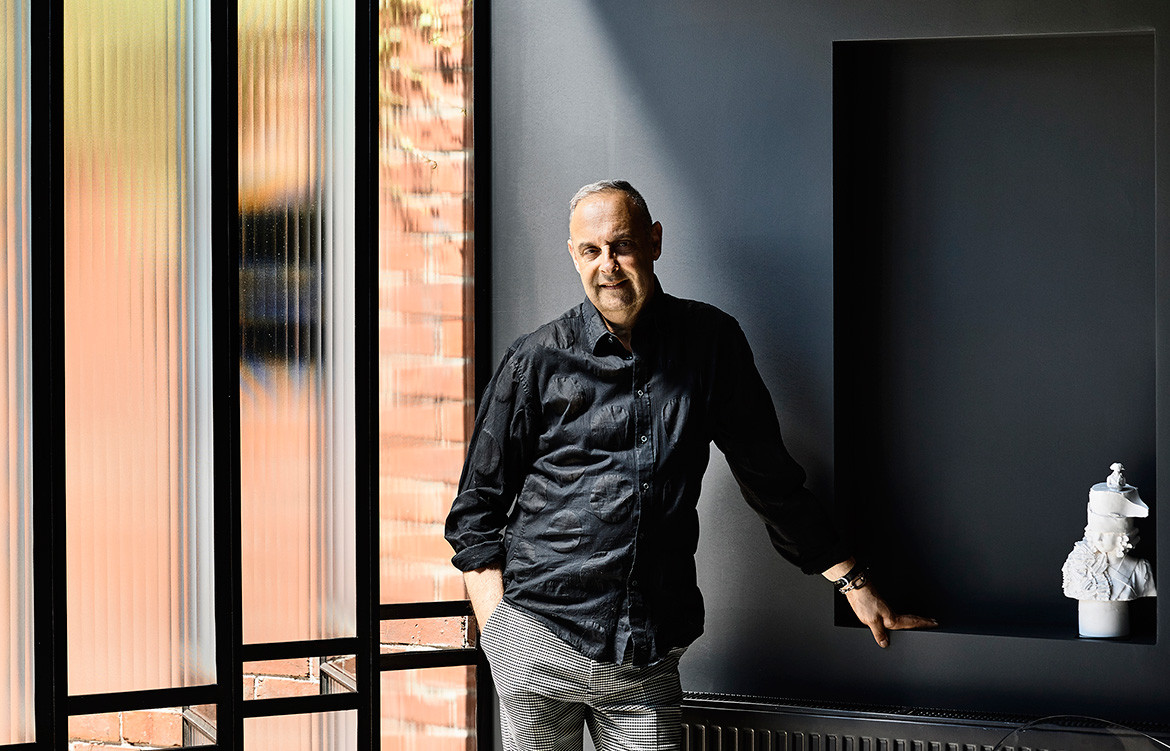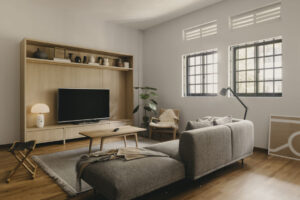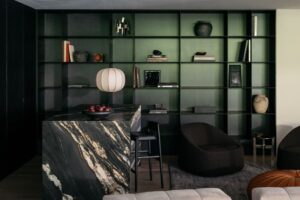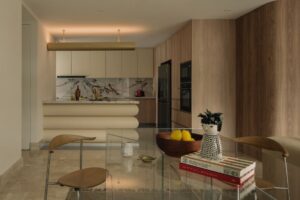Named after the established 30-metre-high Norfolk pines, this new apartment development at Burleigh Heads, by Koichi Takada Architects acts, as a beacon for locals as well as those travelling from interstate and overseas.
Commissioned by developer David Calvisi of FORME and awarded to the architects through a limited competition, the building’s organic-shaped form not only loosely references the pine trees, but the surf culture that gravitates to Burleigh Heads (a short drive from the Gold Coast).

A couple walking past Norfolk carrying their surfboards also evokes the building’s form and lifestyle for residents living here.
“The height of Norfolk directly aligns to these pine trees,” says architect Koichi Takada, principal of the practice.
Spread over nine levels, with the top-level recessed, the 15 spacious apartments, including two two-level penthouses, responds not only to these established trees, but also the expansive blue ocean that unfolds before it.

“It’s a unique location, acting as a ‘bookend’ to the development of the Gold Coast, viewed in the distance,” says Takada, who was keen to create an emotional response for those fortunate residents living at Norfolk.
They can not only enjoy the generosity of the floor plans but also the communal facilities at Norfolk, including the gymnasium and pool.
Unlike most of the other high-rise developments at Burleigh Heads, Norfolk is fluid and organic in its form, with the building’s extended concrete eaves appearing branch-like.

The core of this form, embedded with aluminium battens that resemble timber, have a trunk-like quality. These battens, some of which take the form of operable screens, allow for diffused light as well as for privacy.
With two apartments per level varying in size from 200 to 250 square metres in area, each apartment features generous sliding glass doors to terraces that benefit from the coastal breezes.
As with Koichi Takada Architects inspiration from nature, the interiors by MIM Design are textured, with oak timber floors and natural finishes throughout the apartments.

“When you open all the doors to the terraces, you have that feeling of being outside, one with the elements,” says Takada, who enjoys seeing the way residents change the placement of the external screens depending on the time of day and the amount of sun.
“The facades are continually animated, not dissimilar to the way nature performs,” he adds.

These apartments, unlike many of the rectilinear apartment blocks nearby, certainly don’t give the sense of the ‘suit brigade’ living here.
In this sub-tropical climate, residents coming and going through the curvaceous porte cochere, are more likely to be wearing shorts and thongs.

And while some might be heading off to the beach with their surfboards, others will simply enjoy the wonderful cross ventilation and the smell of salt air that’s an integral part of the Burleigh Heads lifestyle.
“David (Calvisi) spent a considerable amount of time looking for this site. We knew that we had to respond with a design that was truly befitting,” adds Takada.




Project details
Architecture – koichitakada.com
Photography – Steve Burrows Photography
We think you might like this story where we follow Koichi Takada for a day







